|
In 1988, when Beeban Kidron’s first dramatic feature Vroom was released, she was told by a journalist that she was only the fifth woman to have directed a feature film in the UK. While that certainly wasn’t true – the twenty years prior to that year alone had seen full-length films directed by Jane Arden, Christine Edzard, Anna Ambrose (if you count the 47-minute Phoelix, from 1979, as feature-length) and Sally Potter, plus, if you include co-directors as well as solo directors, Laura Mulvey – the paucity of films directed by women is striking, not to mention saddening. The fact that other countries were not much different was little excuse.* I mention this as when Jill Craigie was making her first, and as it turned out, only, dramatic feature, Blue Scar (1949) she was described as the only woman filmmaker in Britain. That wasn’t true then either: that would write out of history Britain’s most prolific woman film director Muriel Box, who made her first feature, The Lost People, the same year. Even so, such comments neglected documentaries, which had been a home for women filmmakers for some decades by then. This DVD box set includes ten examples, made between 1935 and 1967, by ten different directors, Craigie and Box among them. They are on the disc menus in chronological order, which is the order I review them below.
John Grierson’s place in history as a pioneer of British (Scottish) documentary film-making, beginning at the end of the 1920s, is assured. In fact, he came up with the very word “documentary”, using it to describe his friend Robert Flaherty’s Moana (However, his younger sisters Ruby and Marion were also filmmakers and their contributions have often been overlooked. Both were active in the 1930s, Ruby’s career truncated by her early death, of which more in the review of They Who Serve below.
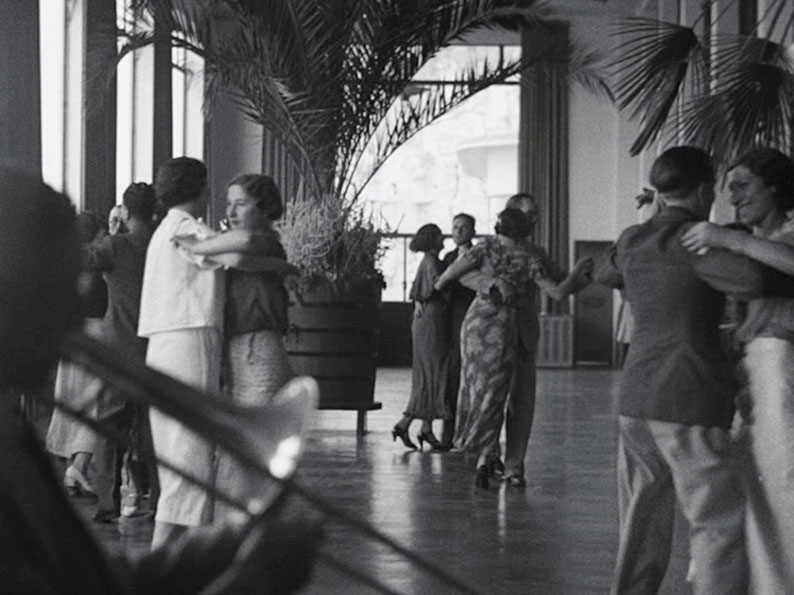
Marion was the youngest of the eight Grierson children. She produced three short documentaries and directed two of them, in 1935 and 1937 and her only other IMDB credit is for an appearance as herself in the 1973 documentary Grierson, made about her famous brother a year after his death. (Her entry is under her married name, Marion Taylor.) As Penny Woolcock says in the booklet with this release, there isn’t much information available on her, and no doubt there is the often-told story of lack of opportunities and, specifically in her case, starting a family, behind her filmography not being more extensive. She never returned to filmmaking and later worked with disadvantaged teenagers in Glasgow.
Beside the Seaside is a lyrical piece showing us Londoners taking advantage of good weather to spend a day at the sea. Grierson’s direction is inventive, taking in slow motion and some odd camera angles – it’s not every film which contains a shot from the viewpoint of a crab. The film for the most part doesn’t have synchronous sound, with the track made up of a marching band, odd bits of dialogue and some narration from the works of W.H. Auden. The only section which is synchronised is the one which wouldn’t fly nowadays, namely two members of Uncle Mack and His Minstrels in blackface, with Uncle Mack (James Summerson) telling some corny jokes. Otherwise, this film is a delight.
Directed by Evelyn Spice in 1938, this film takes us...well, behind the scenes of an institution, namely London Zoo. It begins with animals arriving at the zoo, making up some 6500 looked after by a team of thirty. As well as being looked after, the animals are research subjects in an ongoing programme to assess the best ways to care for them and to assess the effect of various stimuli on them. Their diets are as varied as they are: for example, if you are an ant-eater, you’ll be tucking into ants’ eggs, minced meat, raw eggs and condensed milk. Behind the Scenes was again shot without synchronous sound, with the soundtrack made up of music, narration and occasional snatches of dialogue.
Ruby Grierson made more films than her younger sister Marion, but that’s relative: seven short documentaries between 1937 and 1940. She died on 18 September 1940 on the SS City of Benares when the ship was torpedoed in the North Atlantic. She was thirty-six years old.
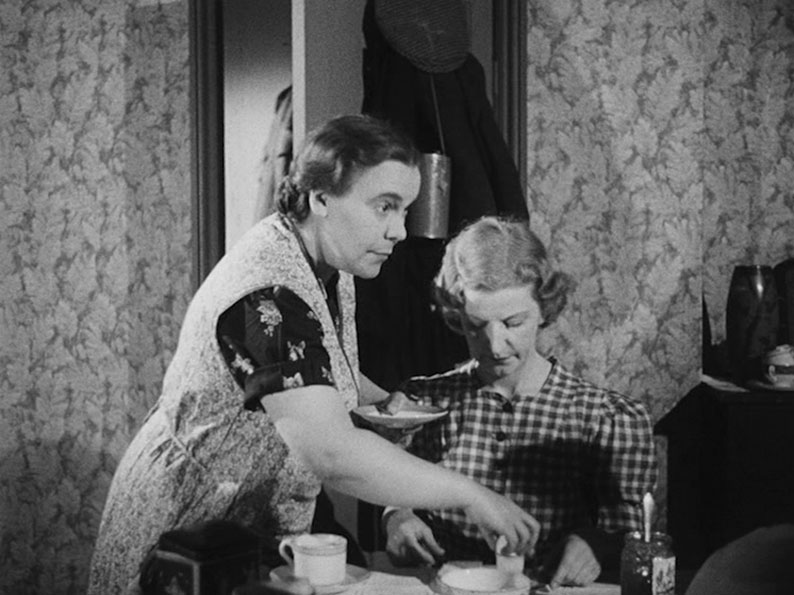
They Also Serve was her final film, and it was a wartime propaganda commission from the Ministry of Information. It may well have been given to her because of its “women’s interest” subject matter, though she is billed as R.I, Grierson in the credits. They Also Serve is intended as a tribute for those on the Home Front while their menfolk are away fighting, in particular the nation’s housewives, and her duties from the point when she rises in the morning until she goes to bed at night. Grierson pays particular attention to her particular chores, the sort of thing that would be cut out or elided in most dramatic features. Finally, she sleeps and the film ends with a caption: HOUSEWIVES OF BRITAIN, THANK YOU FOR YOUR COURAGE AND YOUR HELP.
Another way those at home could help the War effort was to preserve a sound body and mind. 4 and 20 Fit Girls (1940) was part of a series called Fighting Fit and pays particular attention to exercise for women, shot at a village hall.
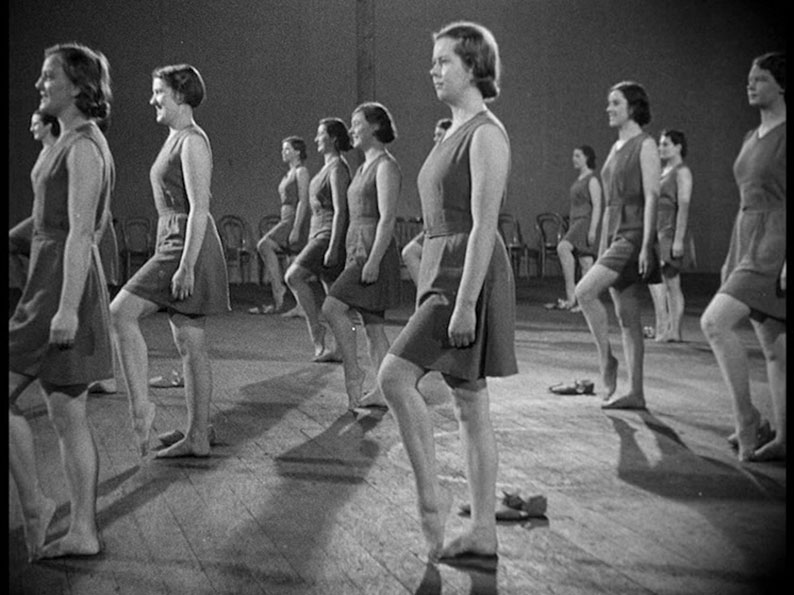
The film was directed by Mary Field, who by then had a career going back to silent days, beginning with the Secrets of Nature series from 1927. She appeared on BBC Television before the War, in 1937, talking about the innovative methods she used to make these, which would make a fascinating extra if it still existed, or most likely was never recorded in the first place. After the War, she devoted her career to cinema for the younger members of the audience, including what became the Children’s Film Foundation.
E.V.H. Emmett’s narration gives 4 and 20 Fit Girls a rather paternalistic slant, and if all sizes and shapes are welcome at exercise classes, those on display in this film are of similar age and build. Yet the inventiveness of Field’s direction, making this a kind of dance film, is undoubted.
Made in 1941, this was the first directing credit for Muriel Box. Box was her first married name, and the one she was predominantly known professionally under, due to her marriage to producer and screenwriter Sydney Box. They were married in 1935, but on this film, made six years later, she is uniquely credited as Muriel Baker. (The third cinematic Box, producer Betty, was Sydney’s younger sister.) Muriel and Sydney won an Oscar for Best Original Screenplay for The Seventh Veil, and with fourteen features and two shorts, Muriel became and remains Britain’s most prolific female director.
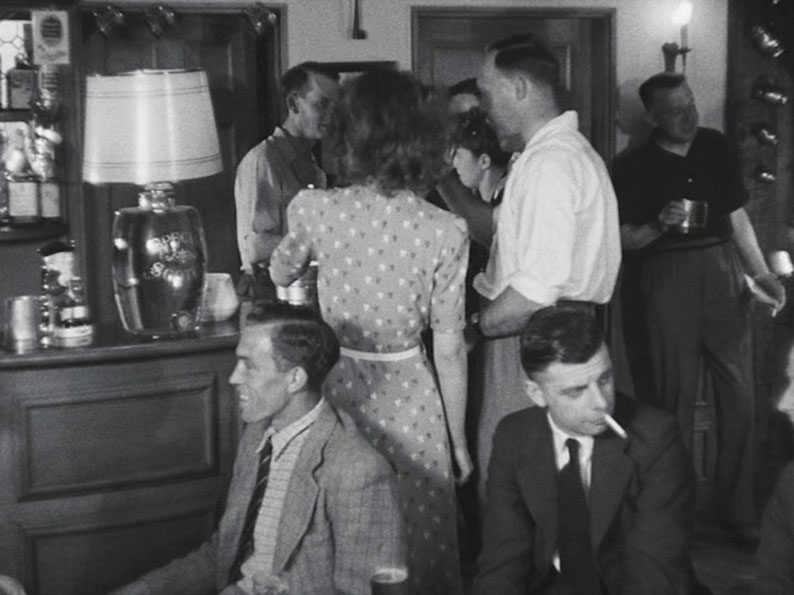
The English Inn, made for the British Council, is a tribute to the public house, a tradition that goes back centuries. It’s a modest film, which works by means of its quiet observation. However in its way it’s subversive, given that this film is being made by a woman about an institution which is traditionally a male preserve. You can see women meeting and socialising in these pubs more often than you might expect, and they’re drinking, smoking and playing boardgames, clearly as at home here as the men. In fact this aspect caused some upset at the Ministry of Information, who declined to export the film on the grounds of its subject being “frivolous” (there was a war on, after all) and later re-edited it to become The Story of English Inns, removing Max Munden’s narration (which he co-wrote with Thomas Burke) and those shots of women in the pubs – and also all the credits.
Birth-Day, from 1945, is a “story documentary”, what would now been called a drama-documentary. Many of the people we see are actors, but there are plenty of real people in their real occupations to be seen, mostly the medical professionals in this film. Birth-Day was made for the Ministry of Information and the Department of Health for Scotland and is intended to encourage pregnant women to use maternity services – and this at a time before the founding of the National Health Service. There is still a war on – hence shots of women working traditionally male jobs in factories – and Mrs McBain (Molly Weir) faces impending motherhood while her husband is away. Meanwhile, he (Tom Macguire) asks advice from an army medical officer (James Smith Campbell). Also included are animations depicting the process of childbirth.
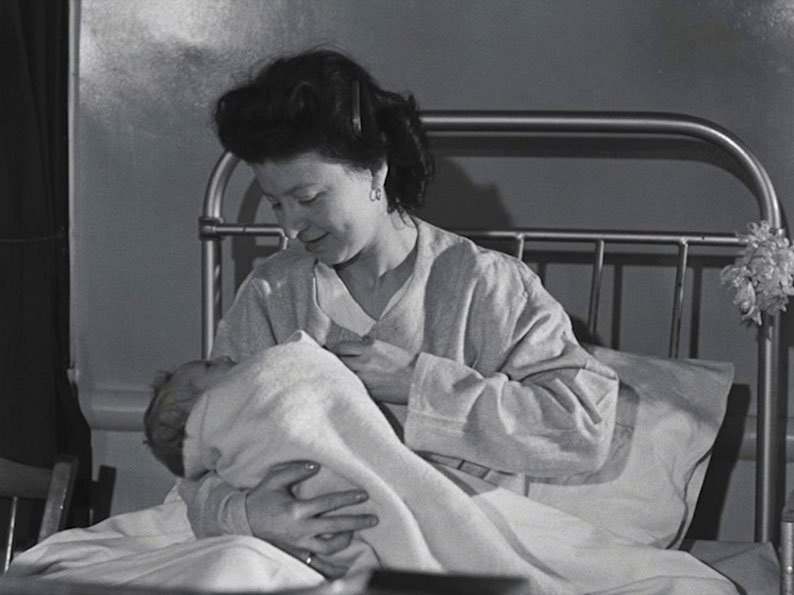
Brigid Cooper billed herself, here and elsewhere, as Budge Cooper. If the use of initials is one way to hide one’s gender, the use of a nickname is possibly another, even if that nickname is the one someone is known by in real life. (See also, for example, the British television director Paddy Russell, given name Patricia.) Before directing, Cooper worked in continuity on such films as London Can Take It! and Target for To-Night. Her career followed a familiar pattern by more or less ending at the end of the 1940s with marriage (to fellow documentary filmmaker Donald Alexander) and a family. She only directed three films: the present one, Children of the City from 1944 and a medical short, Asphyxia and Artificial Respiration, in 1958 after she returned to filmmaking. Behind the camera for Birth-Day, making his first of two appearances in this set (and a third in the extras) is Austrian-born Wolfgang Suschitzky.
Also from 1945 is this documentary, made with an overt political motive. Of the two sponsors, The Daily Herald is front and centre on an opening caption, but uncredited is another one, the Labour Party. The Party made this film for its election campaign, planning to put across its postwar reconstruction plans by featuring five women from five backgrounds and how they lived their lives in frankly inadequate housing. Difficulties include having to drag a pram up six flights of stairs every day, to cooking on a griddle and bathing in a tin bath in the living room. The women talk to camera, presumably in conversation with director Kay Mander behind it. It’s an intimate look at what was a real problem, and a harbinger of the change that would come with Labour’s victory in that general election.
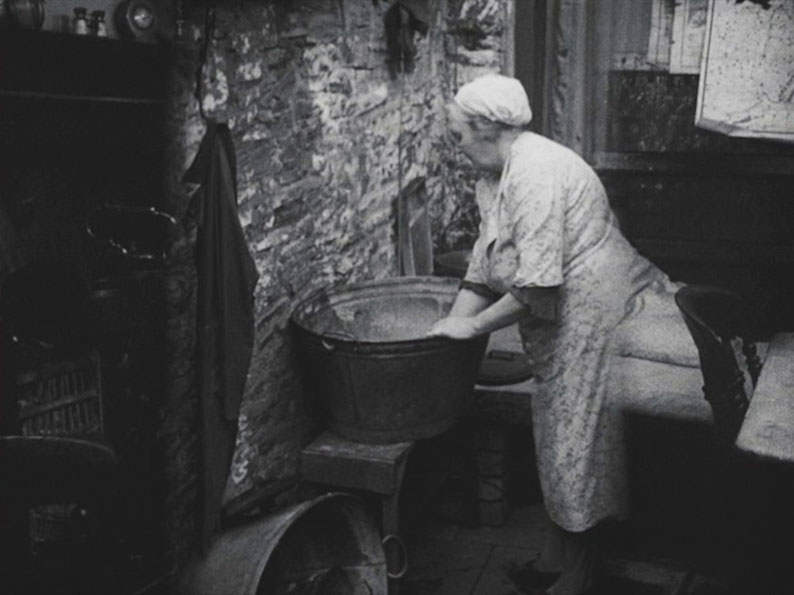
Like Budge Cooper, Kay Mander began in continuity and script supervision and carried on in that role to the end of a career which lasted fifty-four years. Her directing career was much shorter, thirteen shorts and one feature between 1941 and 1957. She said later that she had the skills to direct, but couldn’t face the constant battling, so she returned to her old job. Homes for the People was one of the films she was proudest of.
Jill Craigie’s life and career is covered quite thoroughly elsewhere in this set, but her contribution to it is this 1948 documentary. It was made for the Crown Film Unit. The film began with Humphrey Jennings being commissioned to film the first Conference in 1945 of UNESCO, a United Nations agency dedicated to education and culture. Craigie was brought in the next year after three other directors’ scripts and treatments were deemed unsuitable. Her film shows us children living in appalling conditions in war-devastated areas, and sets up a dialogue between the main male narrator and a female one (most likely Craigie herself) questioning his words and asking when things are to be done. The intention is for him to make the case that UNESCO is the organisation which can do these things.
Made in 1954, The Troubled Mind was made as a recruiting tool for young women into nursing, with the formation of the NHS leading to a demand for health workers. Margaret Thomson’s film also intends to promote a greater understanding of those who experience mental health issues. This is a dramatised documentary: the film takes us into Shenley Psychiatric Hospital, though as the end title tells us, no actual patient appears in the film. The only credited cast member is Adrienne Corri, as new recruit Nurse Laurie. We follow her progress as she steps off the bus outside the Hospital to her training, including a scene showing electroconvulsive therapy. The film was meant as a corrective to the more sensationalised fictional depictions of mental illness in such films as Bedlam (1948) or The Snake Pit (1948) and as such it achieves its aim of a sympathetic look at the subject.
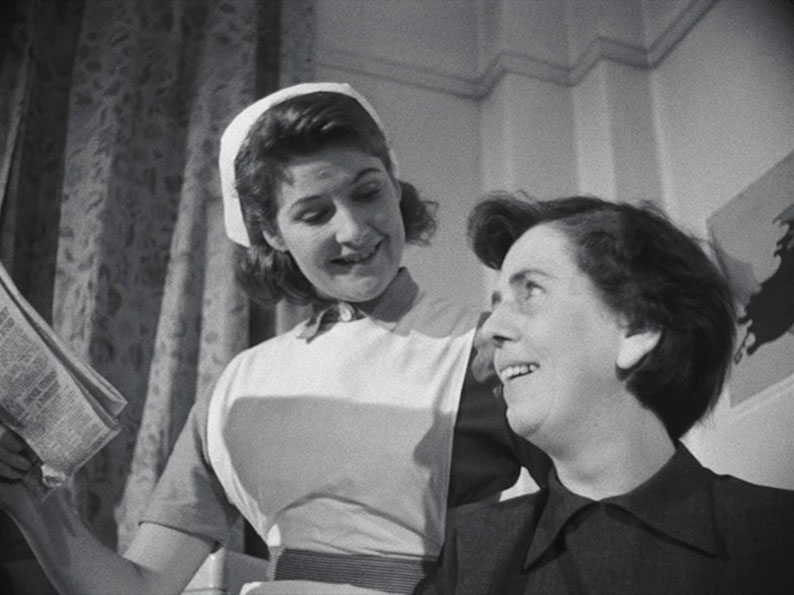
Thomson was born in Australia and began her career in New Zealand, becoming that country’s first female film director. Born in 1910, her directing career lasted from 1941 to 1964, all of that time in documentary except for one dramatic feature, the science fiction film Child’s Play from 1954.
After all those social issues, something to tempt the tastebuds as well as the intellect and emotions. And in colour too. Something Nice to Eat was made for the Gas Council, keen to promote the use of their product in the home. It looks at the cuisine of France so as to urge British housewives to raid their cookbooks for...well, something nice to eat. Shot in Eastmancolour by Wolfgang Suschitzky, at times this film comes over as food porn, but it’s top-grade food porn, the colours sometimes so vivid as almost to be psychedelic. (Well, it was made in 1967, and woman of the moment Jean Shrimpton does make a brief appearance.) All this to a score featuring harpsichord, flute and xylophone. It’s a visually inventive short and I’m hungry now…
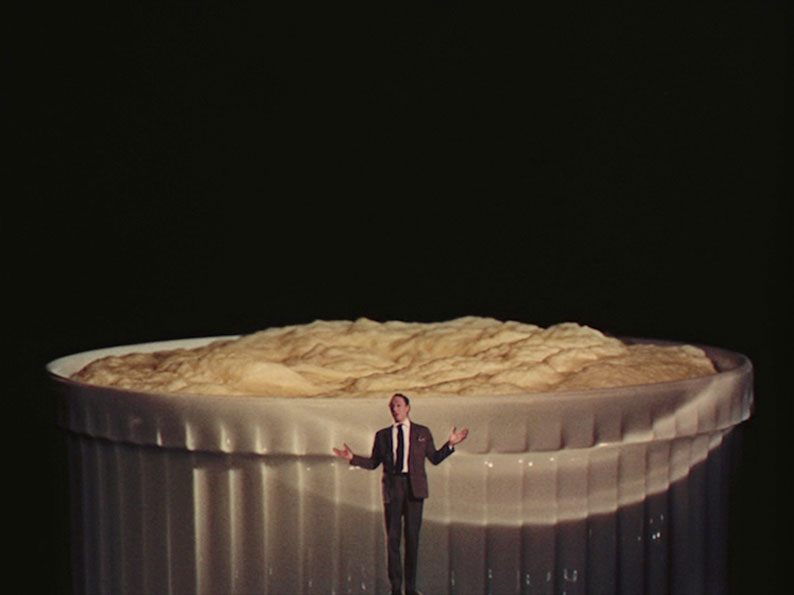
Sarah Erulkar was born in India to a Jewish family, her family moving to the UK when she was a child. Inspired by the classic documentary Night Mail, she saw her future as a filmmaker, starting with the Shell Film Unit and then as a freelance. If her sex made her a rarity in the British film industry, if not as much a one as some might assume, her being a woman of colour made her rarer still. She made nearly eighty films and retired in the 1980s. See the extras for more about Sarah Erulkar.
The Camera is Ours: Britain’s Women Documentary Makers is a two-disc DVD release from the BFI. The discs are PAL format and encoded for Region 2 only. There are five films on each disc, in the order reviewed above, with a Play All option on each disc. Independent Miss Craigie is an extra on Disc One, with the other two extras on Disc Two.
The release has a 12 certificate, which is due to Independent Miss Craigie for “references to sex & sexual violence, images of real dead bodies, language”. Of the other films, Home for the People, The Troubled Mind and Something Nice to Eat don’t appear to have been submitted to the BBFC at any point, but as they are documentaries unlikely to be rated higher than U or PG (the middle one would be a possible 12) they have been exempted from classification for this release. The other films were all U on their original cinema releases, other than Children of the Ruins which was an A. That is now a PG and Beside the Seaside has had its certificate raised to a PG for “discriminatory stereotypes”. The transfers of Beside the Seaside, Birth-Day and Children of the Ruins have opening captions that tell us that each film “includes a scene that reflects harmful racist views”. These areespectively, a pair of seaside entertainers in blackface, a passing comment, and archive footage of African solders dancing in uniform (originating from a German newsreel). The PG for Children of the Ruins is for “upsetting scenes”, which is quite understandable.
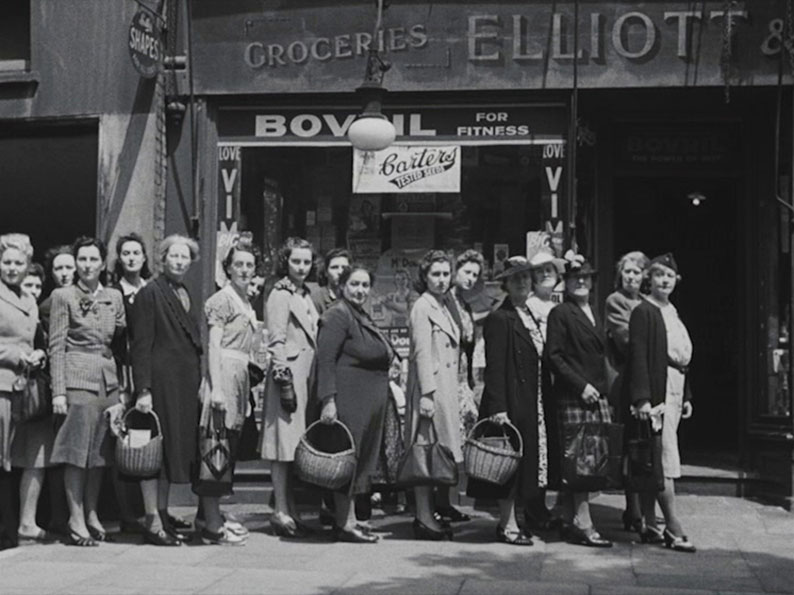
Children of the Ruins
All but one or two of the ten documentaries precedes the widescreen era, but all are presented in an aspect ratio of 1.33:1. That’s clearly correct for the eight earlier films and also the latter two, which don’t appear to have been intended for theatrical distribution. All the films were originated on 35mm (colour for Something Nice to Eat, black and white for the rest). Apart from 4 and 20 Fit Girls (which has appeared on disc before, on the BFI’s 2016 release of films from the home front, Ration Books and Rabbit Pies), the films were all restored in 4K by the BFI National Archive and The Film Foundation, with funding from the Hobson/Lucas Family Foundation from as early-generation sources as possible, be they negatives or release prints (some nitrate), and have struck new 35mm picture and sound negatives. Of the black and white films, Behind the Scenes, Home for the People and Children of the Ruins make use of stock footage, which is softer and certainly grainier than the material elsewhere. Contrast is usually fine, though some films tend towards the dark. The colours in Something Nice to Eat are suitably vibrant.
The soundtrack is the original mono in all cases, rendered as Dolby Digital 1.0, and is clear and well balanced – most of the films don’t make use of live-recorded sound but postsynched sound, music and dialogue and narration are clear and well balanced, which is just as well as there are no hard-of-hearing subtitles offered on the set.
Independent Miss Craigie (91:34)
This is a feature-length documentary directed by Lizzie Thynne on Jill Craigie (1911-1999), whose achievements as a filmmaker have tended to be overshadowed by her third husband, Labour politician and party leader Michael Foot. They met in 1946 while she was making her film The Way We Live, and remained married until her death. (He was two years younger than her and died in 2010.)
The documentary follows a straightforward chronological course, including archive footage and stills, extracts from the films, with some brief dramatic reconstructions and Hayley Attwell as the narrator. Craigie began her career as an actress but moved over into screenwriting. Craigie’s films and political activities reflected both her socialism and her feminism, the latter sparked by reading Sylvia Pankhurst’s The Suffragette Movement in the early 1940s. However, plans to make a film about the suffragettes came to nothing. She directed five films between 1944 and 1951, two features and three shorts, all documentary other than Blue Scar, which was set in and shot in a mining community in Wales against a background of changes in the industry due to nationalisation. After two writing credits in the 1950s (one of them being the Norman Wisdom film Trouble in Store, for which she is uncredited, apparently at her request) she left the film industry. Other than a fifty-minute film for the BBC in 1967, Who Are the Vandals?, she was silent as a filmmaker until 1995, when she made at the age of eighty-four Two Hours from London, in which she and Michael Foot call on world leaders to come to the aid of wartorn former Yugoslavia. Craigie coproduced the film with her grandson Jason Lehel.
Independent Miss Craigie is a well-put-together film that covers a life that is in danger of being forgotten. Thynne doesn’t avoid some touchier parts of the story, from the difficulties of her three marriages, to her late-in-life revelation that she had been raped by the author and journalist Arthur Koestler in 1951.
This documentary is presented in the ratio of 1.78:1 (anamorphically enhanced) with Dolby Digital 2.0 sound.
Sarah Erulkar Q & A (7:20)
Erulkar, eighty-seven years old, is interviewed on stage by Katy McGahan at the BFI Southbank on 18 November 2010. This item is clearly a set of extracts from a longer interview (which would have included film extracts being shown) but it gives Erulkar her chance to talk about her upbringing and her work. There are questions from the audience, one from former colleague Wolfgang Suschitzky (then ninety-eight – he died in 2016 at 104) who declares his love for her. Sarah Erulkar died in 2015 at the age of ninety-two.
This item is presented in a ratio of 1.78:1, anamorphically enhanced, with Dolby Digital 2.0 sound.
Kay Mander (5:21)
This new short documentary was directed by Barney Snow and is based on footage he shot in 2000. It shows Mander, now in in her mid-eighties, at her home in Dumfries. It’s observational stuff, showing Mander, living alone due to widowhood, as she spends her day. Kay Mander died in 2013, aged ninety-eight. The film is presented in 1.33:1 with Dolby Digital 1.0 sound.
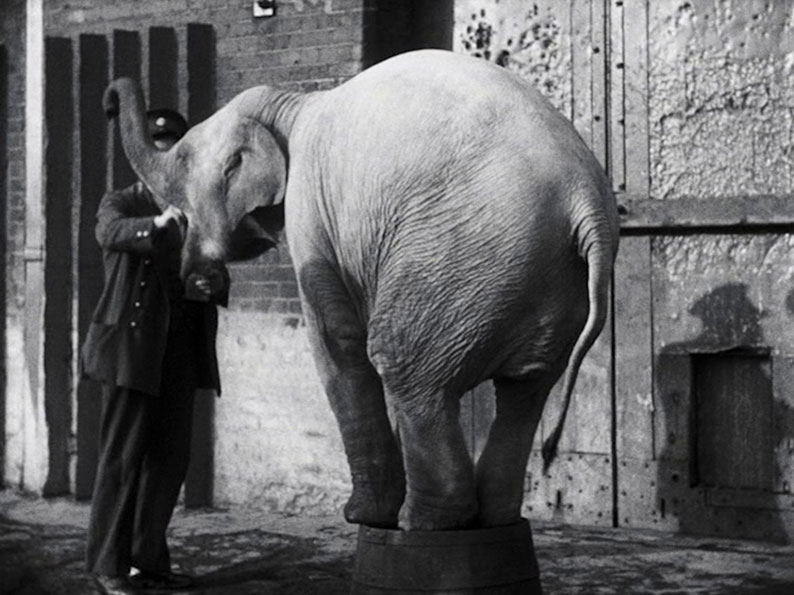
Behind the Scenes
Booklet
The BFI’s booklet, available in the first pressing only, runs to thirty-two pages. As so often with BFI releases of short items like this one, if you have any interest in the subject, do get hold of a copy containing the booklet as there is plenty of information here that isn’t on the discs themselves.
Ros Cranston begins with “Breaking the Goldfish Bowl: Britain’s Women Documentary Makers”. While this set consists of films from the 1930s to the 1960s, Cranston does acknowledge earlier pioneers, often combining their filmmaking with travelling, from the turn of the century and the 1920s – and indeed Mary Field, included in this set, began her career in 1927. The title of the essay comes from a comment by Ruby Grierson to her brother John: “The trouble with you is that you look at things as though they were in a goldfish bowl. I’m going to break your goldfish bowl.” Strong words, seemingly calling for a greater empathy that women were traditionally more capable of, and also calling for the people on film to speak for themselves instead of having a narrator and by proxy a filmmaker speak for them. However, so often we see women of clear talent having their careers shortened for all manner of reasons, including prejudice and the demands of marriage and families, and in Ruby’s case her premature death. One director featured here, Sarah Erulkar also had her ethnicity as a stumbling-block: she became the first British film director of colour of either sex. Since the period covered in this essay, Cranston concludes, far more women documentary-makers have emerged, some of whom contribute to this booklet.
This essay is followed by credits for each of the ten films, with an essay on each. These are by Penny Woolcock on Beside the Seaside, Molly Dineen on Behind the Scenes, Lillian Crawford on They Also Serve, Reba Martin on 4 and 20 Fit Girls, Carol Morley on The English Inn, Patrick Russell on Birth-Day, Jeanie Finlay on Homes for the People, Lizzie Thynne on Children of the Ruins, Katy McGahan on The Troubled Mind and Girish Shambu on Something Nice to Eat. These are all informative and help to put the specific films in context. There are also notes on the extras, the one on Kay Mander being by the filmmaker Barney Snow, the one on Independent Miss Craigie being unsigned. Also in the booklet are plenty of stills.
This two-disc DVD release is a valuable look at women’s contributions to what could be called a golden age of British documentary. This is a part of film history, and specifically British film history, that is under-documented, often little known and underappreciated. Many of the other films by the directors here can be found online, often on BFI Player, and let’s hope that this release prompts people to look further.
|